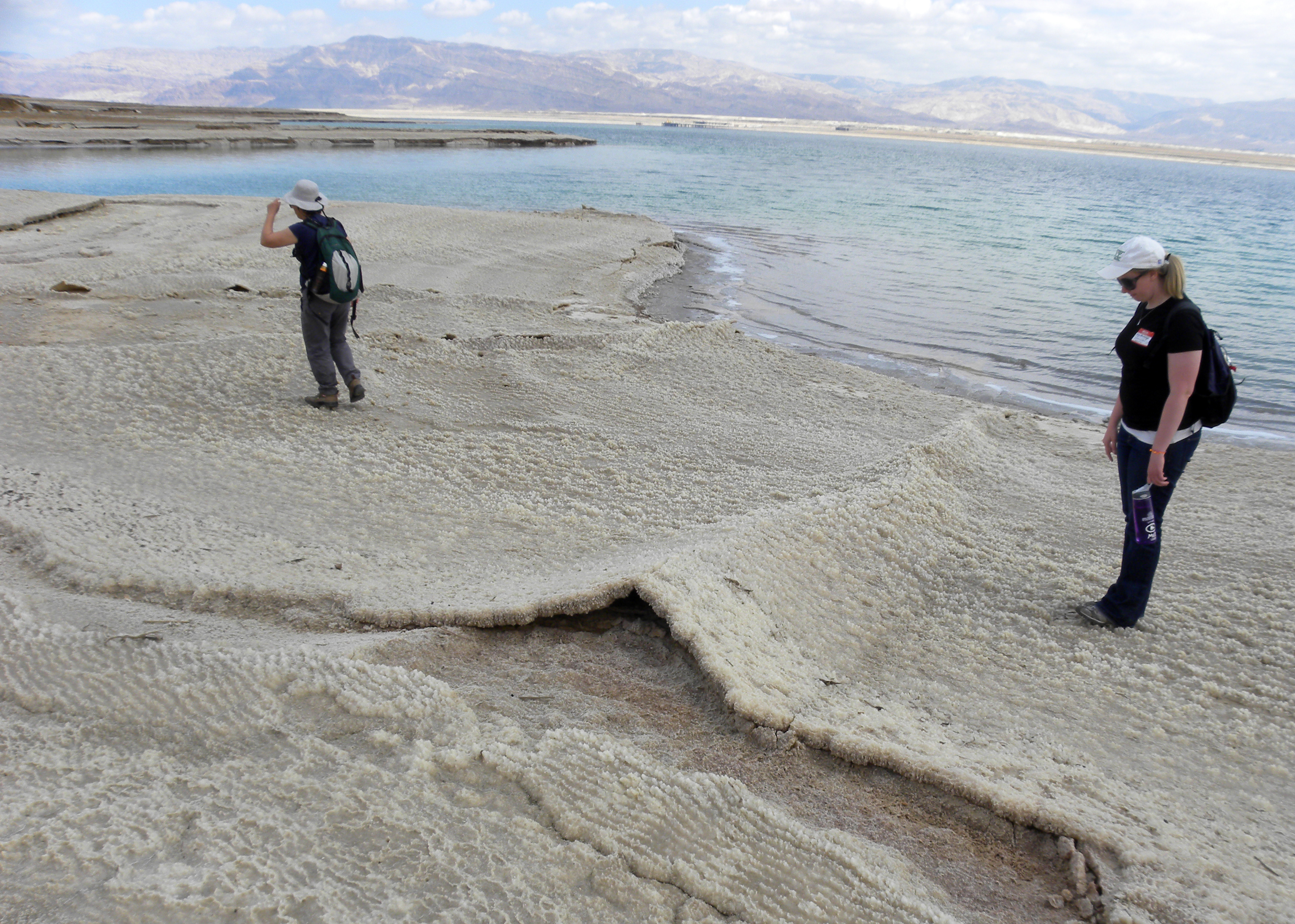teepee structure on:
[Wikipedia]
[Google]
[Amazon]
 Teepee (also spelled tepee or tipi) structures are
Teepee (also spelled tepee or tipi) structures are

sedimentary structures
Sedimentary structures include all kinds of features in sediments and sedimentary rocks, formed at the time of deposition.
Sediments and sedimentary rocks are characterized by bedding, which occurs when layers of sediment, with different parti ...
interpreted to represent formation in peritidal environments. Teepees are largely the result of evaporation of water and subsequent precipitation
In meteorology, precipitation is any product of the condensation of atmospheric water vapor that falls from clouds due to gravitational pull. The main forms of precipitation include drizzle, rain, rain and snow mixed ("sleet" in Commonwe ...
of minerals within sediment, resulting in expansion and buckling to form a teepee-like shape. Their name originates from geologists working in the Guadalupe Mountains
The Guadalupe Mountains () are a mountain range located in West Texas and southeastern New Mexico. The range includes the highest summit in Texas, Guadalupe Peak, , and the "signature peak" of West Texas, El Capitan, both of which are located wi ...
, who noted their appearance in cross-section resembles that of a Native American teepee.
Teepee structures have been observed in rocks more than 2.7 billion years old, and can be seen forming in modern environments on Earth, such as the Dead Sea
The Dead Sea (; or ; ), also known by #Names, other names, is a landlocked salt lake bordered by Jordan to the east, the Israeli-occupied West Bank to the west and Israel to the southwest. It lies in the endorheic basin of the Jordan Rift Valle ...
.
Formation
Several mechanisms are involved in the formation of teepee structures, with displacive forces resulting from mineral precipitation likely the most important.Displacive force from mineral precipitation
The precipitation of minerals (e.g.,calcite
Calcite is a Carbonate minerals, carbonate mineral and the most stable Polymorphism (materials science), polymorph of calcium carbonate (CaCO3). It is a very common mineral, particularly as a component of limestone. Calcite defines hardness 3 on ...
, gypsum
Gypsum is a soft sulfate mineral composed of calcium sulfate Hydrate, dihydrate, with the chemical formula . It is widely mined and is used as a fertilizer and as the main constituent in many forms of plaster, drywall and blackboard or sidewalk ...
, halite
Halite ( ), commonly known as rock salt, is a type of salt, the mineral (natural) form of sodium chloride ( Na Cl). Halite forms isometric crystals. The mineral is typically colorless or white, but may also be light blue, dark blue, purple, pi ...
) within sediments results in expansive forces. If supersaturated pore waters are maintained during mineral precipitation, the forces can be sufficient to deform sedimentary beds. This conditions would be particularly prevalent in areas with low rates of precipitation
In meteorology, precipitation is any product of the condensation of atmospheric water vapor that falls from clouds due to gravitational pull. The main forms of precipitation include drizzle, rain, rain and snow mixed ("sleet" in Commonwe ...
and high rates of evaporation
Evaporation is a type of vaporization that occurs on the Interface (chemistry), surface of a liquid as it changes into the gas phase. A high concentration of the evaporating substance in the surrounding gas significantly slows down evapora ...
, such as sabkhas.Hydration of salts
The hydration of some minerals is associated with a significant increase in volume. The hydration ofanhydrite
Anhydrite, or anhydrous calcium sulfate, is a mineral with the chemical formula CaSO4. It is in the orthorhombic crystal system, with three directions of perfect cleavage parallel to the three planes of symmetry. It is not isomorphous with the ...
to form gypsum
Gypsum is a soft sulfate mineral composed of calcium sulfate Hydrate, dihydrate, with the chemical formula . It is widely mined and is used as a fertilizer and as the main constituent in many forms of plaster, drywall and blackboard or sidewalk ...
, for example, results in an increase of volume by 63%. In arid environments where anhydrite is widespread, a storm or spring tide
Tides are the rise and fall of sea levels caused by the combined effects of the gravitational forces exerted by the Moon (and to a much lesser extent, the Sun) and are also caused by the Earth and Moon orbiting one another.
Tide tables ...
could case rapid hydration and swelling, resulting in increased stresses and buckling
In structural engineering, buckling is the sudden change in shape (Deformation (engineering), deformation) of a structural component under Structural load, load, such as the bowing of a column under Compression (physics), compression or the wrin ...
within the sediment to form teepees.
Thermal expansion
Different rocks expanded by different amounts when heated. A 10 m wide sheet of limestone will become approximately 4 mm wider when heated by 50°C, whereas a rock with significant amounts ofsulphate
The sulfate or sulphate ion is a polyatomic anion with the empirical formula . Salts, acid derivatives, and peroxides of sulfate are widely used in industry. Sulfates occur widely in everyday life. Sulfates are salts of sulfuric acid and many ...
or chloride
The term chloride refers to a compound or molecule that contains either a chlorine anion (), which is a negatively charged chlorine atom, or a non-charged chlorine atom covalently bonded to the rest of the molecule by a single bond (). The pr ...
minerals may expanded by 12 - 24 mm in width. While this is likely insufficient for the generation of teepees by itself, it may work in conjunction with the other mechanisms.Earthquake
Some have suggested that teepee structures may be the result ofseismic activity
An earthquakealso called a quake, tremor, or tembloris the shaking of the Earth's surface resulting from a sudden release of energy in the lithosphere that creates seismic waves. Earthquakes can range in intensity, from those so weak they ...
deforming sedimentary layers.
References
{{reflist Sedimentary structures